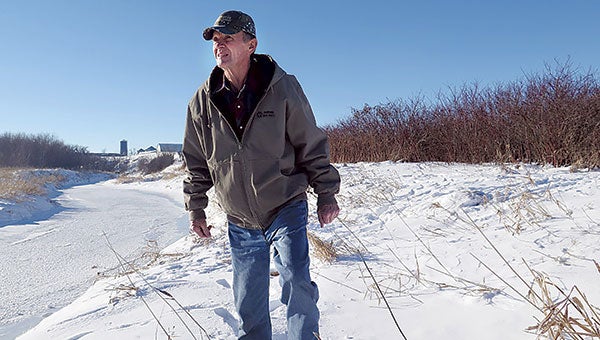As crop prices fall, farmers may roll more land into conservation
Published 10:05 am Tuesday, January 26, 2016

Farmer Walt Kellen, 72, has about 130 of his nearly 1,000 acres in the Conservation Reserve Program or CRP. Kellen farms in southwest Minnesota and credits the CRP acres with helping increase wildlife on the property. Mark Steil/MPR News
By Mark Steil
MPR News.org/90.1
Groves of trees and acres of prairie plants break up the nearly continuous fields of corn and soybeans at the Walt Kellen farm in southwest Minnesota. They’re part of the land he has in the Conservation Reserve Program.
Kellen has about 130 of his nearly 1,000 acres in CRP, the longtime federal farmland conversation program. He says most of it’s marginal for growing crops anyway and he likes that the CRP acres have noticeably increased the wildlife on his farm. He’s also planted some 30,000 trees.
Kellen, 72, says he’s happy to accept CRP payments instead of trying to make a go of marginal land. More farmers are likely to be reaching the same conclusion. Major grain prices are so low, many farmers will lose money trying to put a crop in the ground.
Participation had been declining in the CRP, the federal government’s main farmland protection program, which pays farmers to replant crop and pasture land with trees and grasses, providing wildlife habitat and stopping soil erosion.
Those environmental benefits sometimes conflict with the economics of farming, especially when prices are climbing. Farm economics now, though, are turning back in favor of enrolling land in the CRP.
Kellen has allowed grassy buffers to grow along the streams that crisscross his CRP land. They’re the same type of buffer the Minnesota Legislature is requiring all farmers to install along streams, lakes, wetlands and many drainage ditches.
Kellen says the grassy strips filter out pollutants before they reach public waters. The federal government pays him around $80 an acre for his CRP land. The statewide average is about $95 an acre.
The more productive the land, the higher the payment. Minnesota farmers enrolled just over one million acres in the program last year. Val Dolcini oversees the Conservation Reserve Program as head of the U.S. Agriculture Department’s Farm Service Agency.
“CRP really represents one of the most successful federal conservation programs that we at USDA have ever administered,” Dolcini said.



